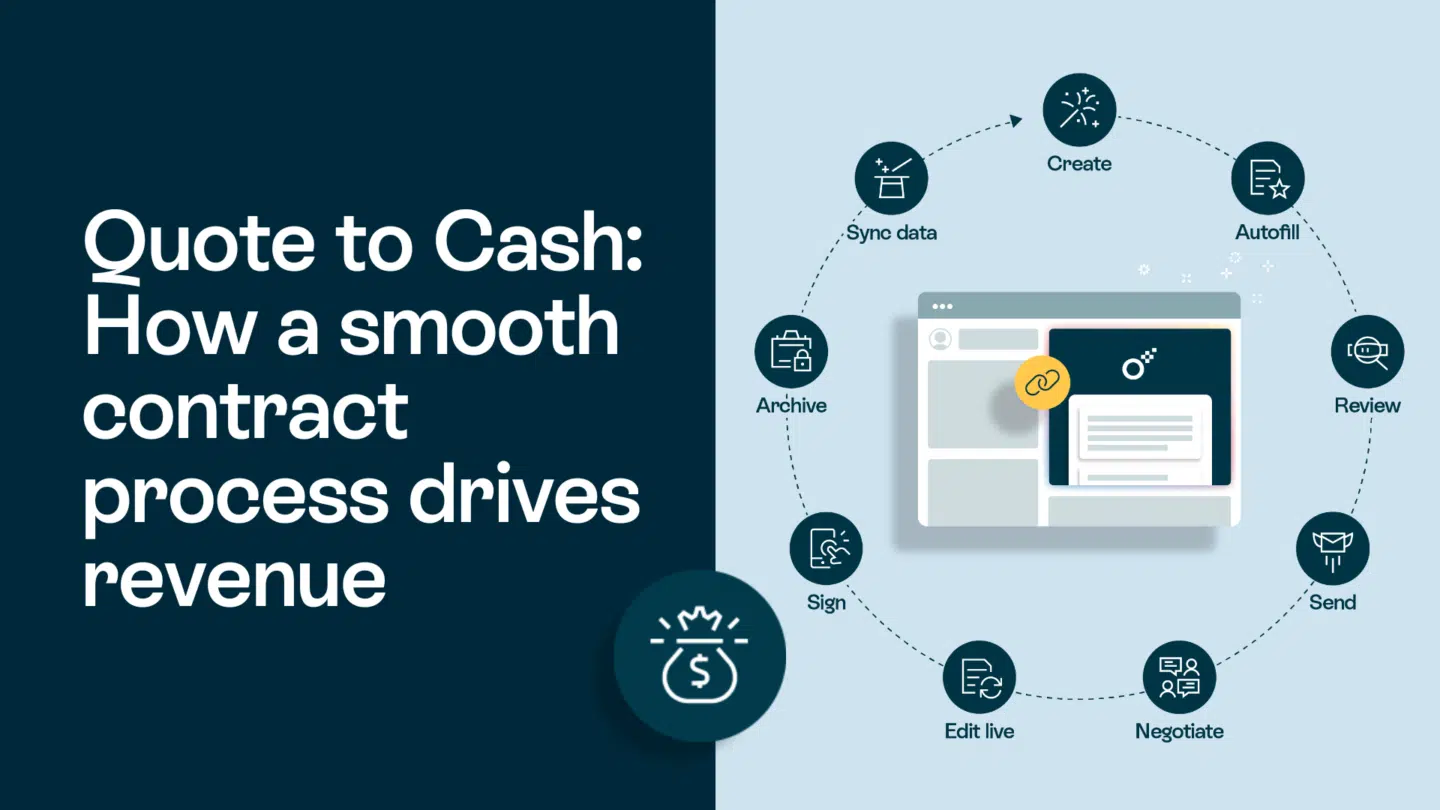Finance leaders play a pivotal role in shaping go-to-market (GTM) strategies in the era of “grow at cost-efficiently” in tech and software industries. Many finance leaders scrutinize technology and platform costs but often overlook the use of disparate tools for contract management, which can lead to increased costs, inefficient cross-team collaboration, and slower decision-making processes. By reimagining contract management, finance leaders can transform these challenges into opportunities for efficiency and growth.

The hidden costs of disparate contract management tools
Relying on a patchwork of contract management tools can have several adverse effects:
- Increased operational costs: Maintaining multiple systems often results in higher licensing fees, redundant functionalities, and additional training expenses. Research indicates that inefficient contract management can cost companies up to 9% of their annual revenue.
- Inefficient cross-team collaboration: When sales, legal, and finance teams use different platforms, it creates silos, leading to miscommunication and delays in contract approvals. A report by World Commerce & Contracting highlights that inefficient processes and fragmented responsibility in contracting hinder effective collaboration.
- Slower decision-making: Fragmented data across various tools hampers real-time visibility into contract statuses, making it challenging for finance leaders to make informed decisions promptly. McKinsey & Company notes that businesses often follow inefficient contractor-management practices, leading to delays and increased costs.
Read also: The basics to contract management and how to work with it
The strategic role of finance leaders in GTM success
Finance leaders are uniquely positioned to drive GTM success by:
- Aligning investments with GTM strategies: By understanding the financial implications of GTM initiatives, finance leaders can allocate resources effectively to maximize ROI.
- Enhancing revenue efficiency: Streamlining contract management processes ensures faster deal closures and improved cash flow. Forbes emphasizes that implementing efficient contract lifecycle management can strengthen business operations.
- Fostering collaboration: Bridging the gap between finance and GTM teams promotes a unified approach, leading to cohesive strategies and better outcomes.
Transforming contract management into a strategic asset
To mitigate the challenges posed by disparate tools, finance leaders should consider the following steps:
- Assess current systems: Conduct a thorough evaluation of existing contract management tools to identify redundancies and inefficiencies.
- Implement integrated solutions: Adopt a unified contract lifecycle management (CLM) platform that centralizes all contract-related activities, facilitating seamless collaboration across departments. Forrester Research discusses the benefits of implementing CLM systems to streamline processes.
- Automate routine processes: Leverage automation to handle repetitive tasks such as contract generation, approvals, and renewals, thereby reducing manual errors and freeing up valuable time. According to Forbes, AI can reduce contract inefficiencies and drudgery.
- Enhance data visibility: Ensure that the CLM system provides real-time analytics and reporting capabilities, enabling finance leaders to monitor contract performance and make data-driven decisions.
- Promote cross-functional training: Encourage training programs that familiarize all relevant teams with the integrated CLM system, fostering a culture of collaboration and shared responsibility.
Final thoughts
By rethinking contract management and addressing the pitfalls of disparate tools, finance leaders can significantly reduce operational costs, enhance cross-team efficiency, and accelerate decision-making. This strategic approach not only streamlines internal processes but also strengthens the organization’s overall GTM effectiveness, positioning the company for sustained success in a competitive marketplace.









